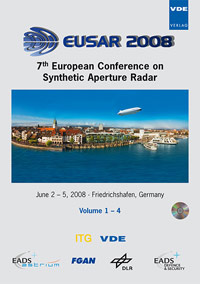Deformation, Ecosystem Structure, and Dynamics of Ice (DESDynI)
Conference: EUSAR 2008 - 7th European Conference on Synthetic Aperture Radar
06/02/2008 - 06/05/2008 at Friedrichshafen, Germany
Proceedings: EUSAR 2008
Pages: 4Language: englishTyp: PDF
Personal VDE Members are entitled to a 10% discount on this title
Authors:
Freeman, Anthony; Donnellan, Andrea; Rosen, Paul; Evans, Diane; Graf, Jim; Loverro, Adam; Treuhaft, Robert; Oberto, Robert; Johnson, WTK; Simard, Marc; Farr, Tom; Rignot, Eric; Kwok, Ronald; Pi, Xiaoqing (Jet Propulsion Laboratory, California Institute of Technology, 4800 Oak Grove Drive, Pasadena, CA 91109)
Abstract:
The National Research Council’s Decadal Survey for Earth Science identified the Deformation, Ecosystem Structure, and Dynamics of Ice (DESDynI) mission among the highest priorities for new NASA Earth missions. DESDynI consists of an L-band Synthetic Aperture Radar configured for repeat-pass interferometric observations (InSAR), and a nadir pointing lidar suitable for vegetation canopy structure characterization. In response, analyses are underway to evaluate efficient combinations of science objectives and mission/instrument scenarios. The InSAR component can be satisfied by a traditional phased array deployable aperture as flown in space on SeaSAT, JERS-1, and ALOS. Alternatively, the SAR can be designed as an offset-fed reflector, capitalizing on large commercial mesh reflector antenna and transmit/receive modules developed for the NASA UAVSAR airborne radar. This InSAR system satisfies key science objectives and addresses several shortcomings of existing InSAR capable satellites. To reduce temporal decorrelation, L-band (24 cm wavelength) is used. A 340 km wide-swath scanSAR mode with 8 (or 12) day repeat enhances study of ice dynamics, pre/post earthquake deformation, volcano monitoring, and other dynamic phenomena. Fully polarimetric capability allows wide-area extension of key parameters of the vegetation canopy, such as biomass and land cover change, firmly anchored through the fine detail provided by the lidar in globally distributed profiles. Similarly polarimetric InSAR measurements allow further refinement of canopy structure in appropriate canopies. Key challenges involve scheduling and observational strategy to optimize overlapping observational requirements of various science communities served. This paper focuses on the InSAR technology and observational trades that affect the science return, in combination with and distinct from the lidar.


